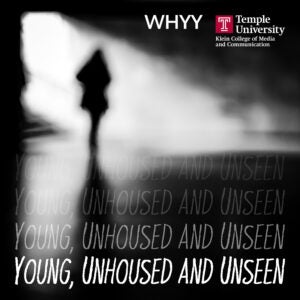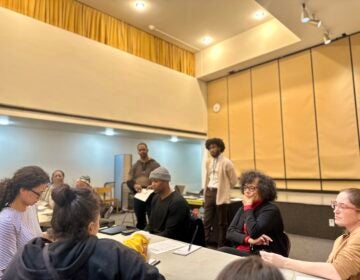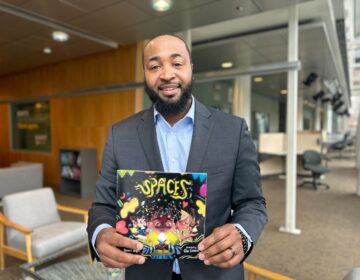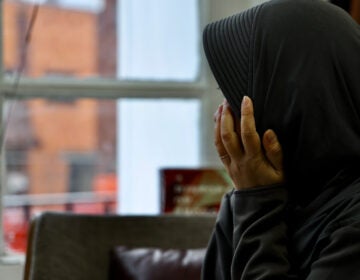8% of college students are unhoused. With ‘nowhere to go,’ here’s Paulo Garcia’s story
Paulo Garcia used to sleep in the baseball dugout and empty homes. He found help and housing a year later, motivated by his 2-year-old.
Listen 3:57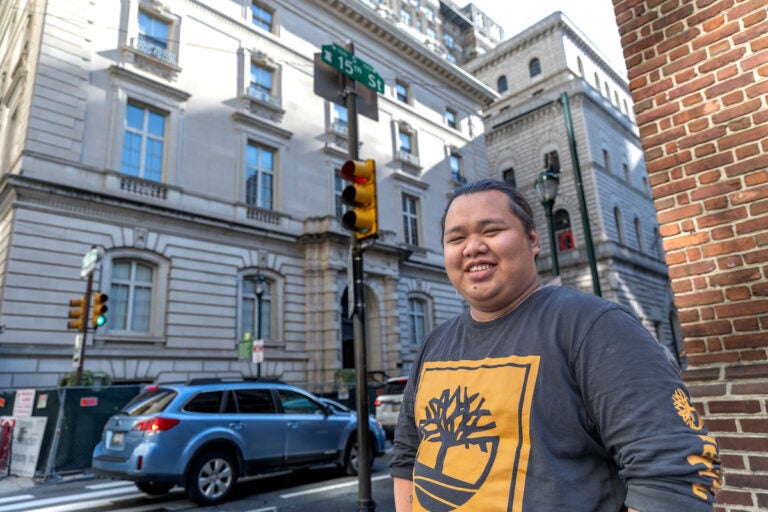
Paulo Garcia faced housing insecurity when he was in college and decided to become an outreach worker to help young adults who face also face housing insecurity. (Kimberly Paynter/WHYY)
This story is from Young, Unhoused and Unseen, a podcast production from WHYY News and Temple University’s Logan Center for Urban Investigative Reporting.
Find it on Apple Podcasts, Spotify, or wherever you get your podcasts.
Paulo Garcia’s favorite song is “Never Been to Spain” by Three Dog Night.
But these days, he has “How Am I Supposed to Live Without You” by Michael Bolton on repeat.
“I’m like a 64-year-old in a 24-year-old’s body,” Garcia said, laughing.
Garcia feels simultaneously stuck in time and behind compared with the rest of his 20-something friends. His life experiences mimic that sentiment.
At his age, he not only became a college student but also part of the 8% of undergraduate college students who experience homelessness nationwide. The statistic was reported by The Hope Center at Temple University as part of their analysis of data from the U.S. Education Department’s National Center for Education Statistics. In Philadelphia, between 12-18% of college students experienced homelessness during the pandemic, according to a survey by The Hope Center at Temple University.
The study found overlapping challenges, for instance: “A student might experience housing insecurity during one semester and food insecurity the next. Some students are housing insecure during the summer and homeless during the winter.”
That part of Garcia’s story is rooted in his childhood.
He tousled his hair and combed it back with his fingers, tying it into a knot. Leaning back in his chair, he detailed his journey of arriving in the U.S. in 2014 and later becoming an unhoused college student in 2020.
“The best thing ever happened to me… it’s having my freedom,” he said.
When Garcia was 14, his family emigrated from the Philippines and were part of a conservative religious community. He recalled strict curfews and how that stifled any possibility of fostering friendships. Music and entertainment were limited, and faith-centered.
Garcia and his four siblings were allowed to be out of their house during the day. But they needed to be home by 9 p.m. every evening. Garcia felt locked in.
He was often lonely and attributes that to being raised in a religious household, or “a cult,” as he called it.
After high school, he felt ready to branch out on his own. College was a way out.
Clicking through LaSalle University’s list of majors, one leapt off the screen: international business.
“I always want to be a businessman, make all [that] money and be a boss,” he said.
But his parents disapproved.
They told him that his two older siblings already attended university and they could not afford to send him. If he enrolled, they warned, he would be kicked out.
It was too late. By then, Garcia had signed up for his freshman-year classes.
“They gave me a day or two to leave the house. So, I left that house with nowhere to go,” he said.
Left to fend for himself, he got a job wherever he could. But even having a job could not spare him from becoming housing insecure.
A survey by the Institute of Higher Education policy found that college affordability remains out of reach for many low-income students and students of color. These students also tend to be the most impacted by rising housing and tuition costs.
The Hope Center at Temple University conducted a study to understand the scope of the disparities in basic needs across several demographics. Basic needs were categorized as food, housing, and child care.
Temple researchers found that disparities in housing, food security, and income worsened during the pandemic. Around 12% of Philadelphia college students at two-year and four-year institutions experienced homelessness. Housing insecurity affected almost half of students at two-year colleges and 39% at four-year colleges.
“Studies indicate that students facing food or housing insecurity have lower grade point averages, poorer health, and higher rates of depression and anxiety than those who do not face these challenges,” the Hope Center report underscored.
Accessible aid is difficult to find, students said, and in Philadelphia the needs are great. More notably, seven in 10 students did not know they were eligible for support.
Garcia’s story is just one of many.
From a home to school bleachers
Having a job did not even cover his bills, Garcia said. He worked as much as he could.
He cobbled together tips from his job at a bar and money from a job doing tilework for a realtor. Some days, Garcia would work from 5 p.m. to 4 a.m.
He slept for a few hours, then headed to his 8 a.m. classes at LaSalle University.
Money was tight, the COVID-19 pandemic was hitting, and he was just learning what college life was. This was like nothing he’d experienced. He went from a regimented, strict schedule to an everything-goes environment.
“You just go wild,” Garcia said, remembering his first two years going out to bars with new friends.
But what he wanted most was a place to stay — so he asked advisors for help.
The university staff referred him to St. Joseph’s House, a 24-bed transitional shelter for college students operated by the nonprofit Depaul USA and funded by the Office of Homeless Services.
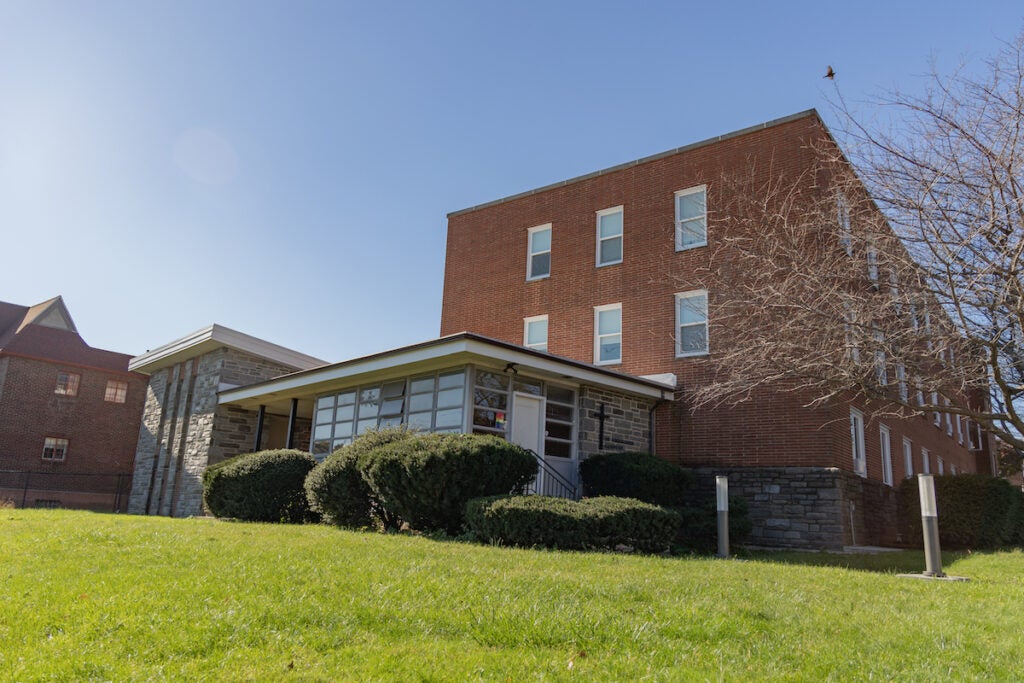
It is one of 14 transitional housing programs that OHS oversees in Philadelphia. The shelter is housed in a former convent.
Remnants of its original architecture hearken back to its past: Small recessed niches — where religious icons or statues would be — line the hallways leading to the dorm rooms. Honey-colored teak-wood lockers display crosses, a constellation of small holes bored into the doors.
But the vibe is very much like a college dorm. Residents decorated the ceiling of the communal lounge with ghosts, ghouls, and orange garlands to celebrate Halloween. Though the holiday had since passed, Brendan Sculley, the director for Depaul USA’s Philadelphia division, said the youth living there like to make their space look and feel festive.
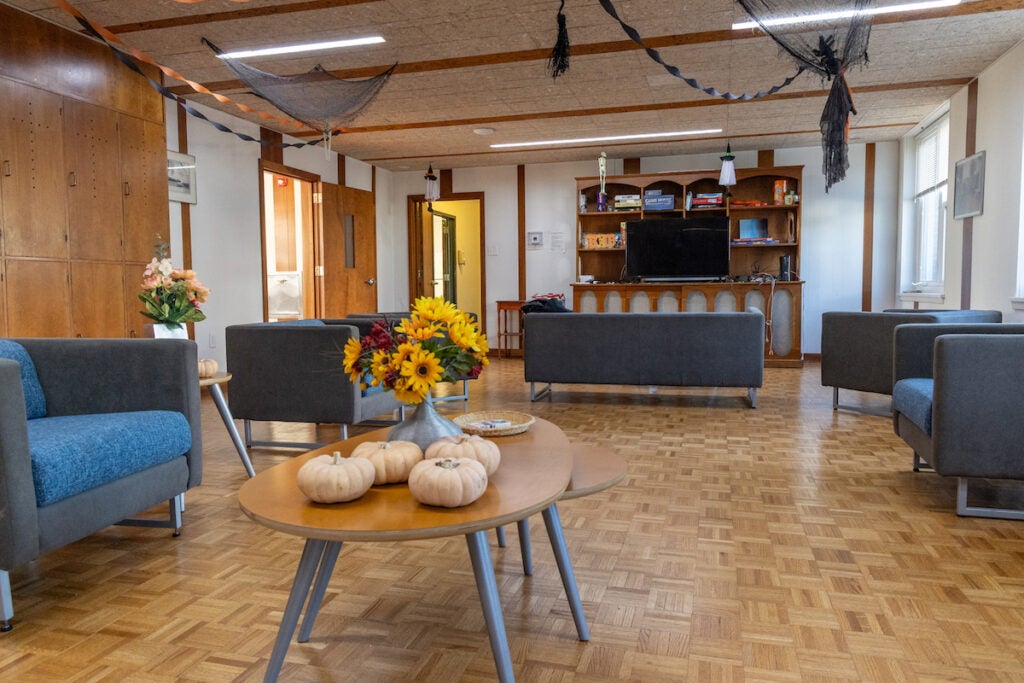
Sculley said St. Joseph’s House has basic protocols in place. There is a loose curfew and residents are not allowed to drink alcohol on shelter grounds.
Students who are housing insecure or unhoused get the dorm-like experience for just a fraction of the cost. Responsibilities such as kitchen clean-up are divided up per week.
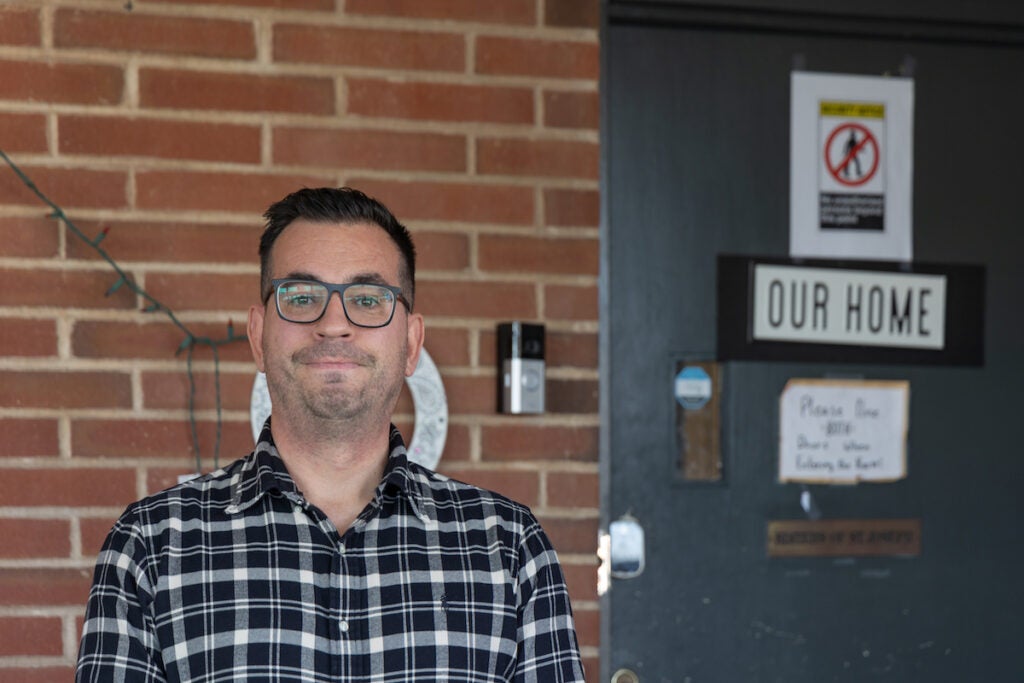
Garcia had his own room with a twin bed, shared a kitchen space, and had access to a food pantry for $150 per month.
St. Joseph’s House, which had just opened in April 2020, was his home for six months.
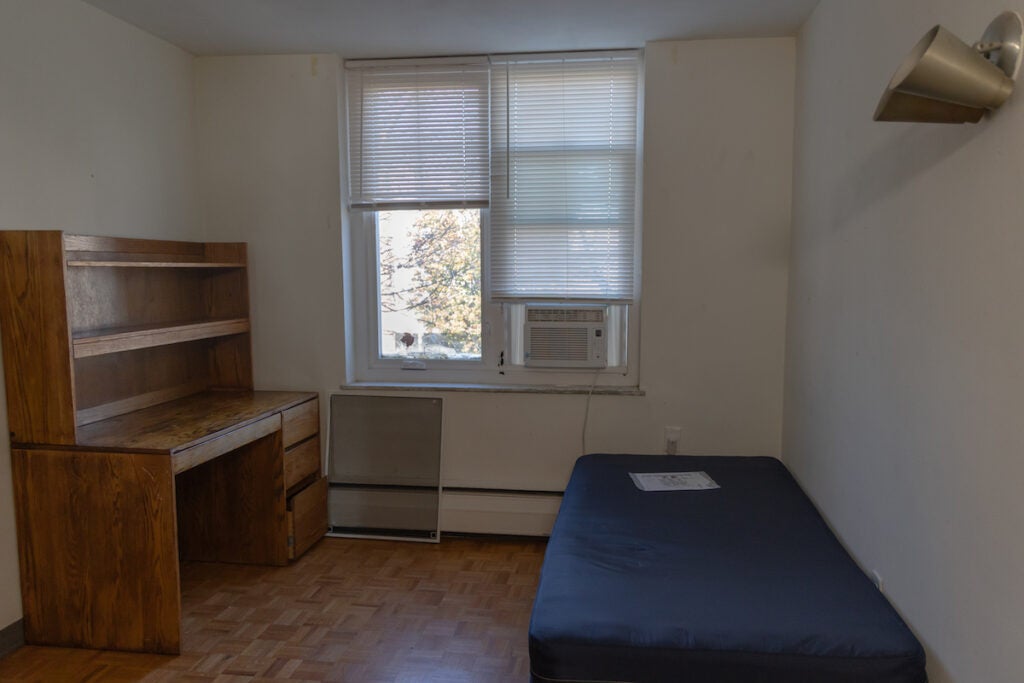
“I was supposed to find a place to live during [those] six months but I was struggling with working and school,” he said, and explained that the shelter’s policy at the time only allowed for a maximum six-month stay.
After leaving the shelter, he again had no place else to go. Garcia became a part of the nearly 40% of Philadelphia college students to experience housing insecurity during the pandemic.
Sculley was not at St. Joseph’s during Garcia’s stay and could not provide insight on why he was instructed to leave after six months, but the shelter was still in its beginning stages. The current policy allows students to stay a minimum of 24 months.
Though it is unclear why Garcia had to leave, he again found himself unhoused and wandering aimlessly.
Checks from the bar and odd jobs were insufficient to cover rent and bills. He was unable to afford a place of his own so he slept in baseball dugouts or under gym bleachers.
“I would sit there all night, sleep under the bleachers when it’s not hot,” he recalled.
Finding family and purpose
Garcia struggled to find shelter night to night until a friend referred him to Valley Youth House, a youth social services organization. There he met Ericka Brown-Boulware, VYH’s street outreach and youth designated access point supervisor.
Brown-Boulware remembers a shy, quiet kid.
All she knew was that Garcia had been sleeping wherever he could, but never in the same place.
“A lot of our youth aren’t connected to family. We become the person or those people for them,” she said.
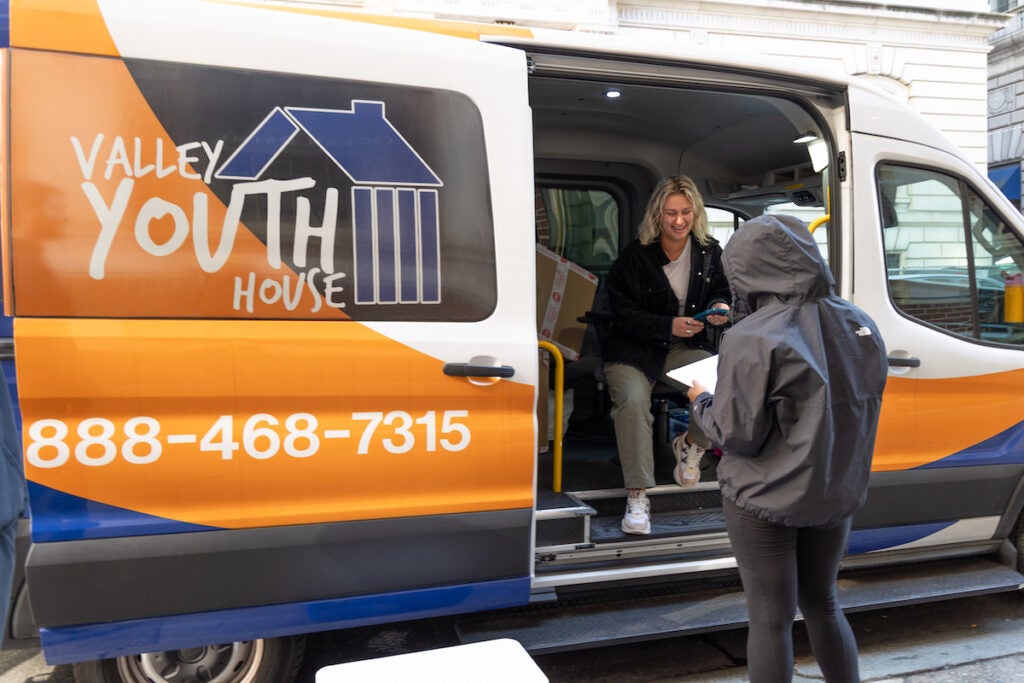
It begins with outreach, she said. Their teams post up outside of their office at 15th and Sansom streets with warm bags of food and a sign-up sheet. Most Tuesdays, a line of youth extends from the door of the van and wraps around the corner of the building.
During intake, they assess youth and work to connect people like Garcia to youth residential programs around the city like La Casa, where he stayed for around two years.
That was Garcia’s first step out of homelessness.
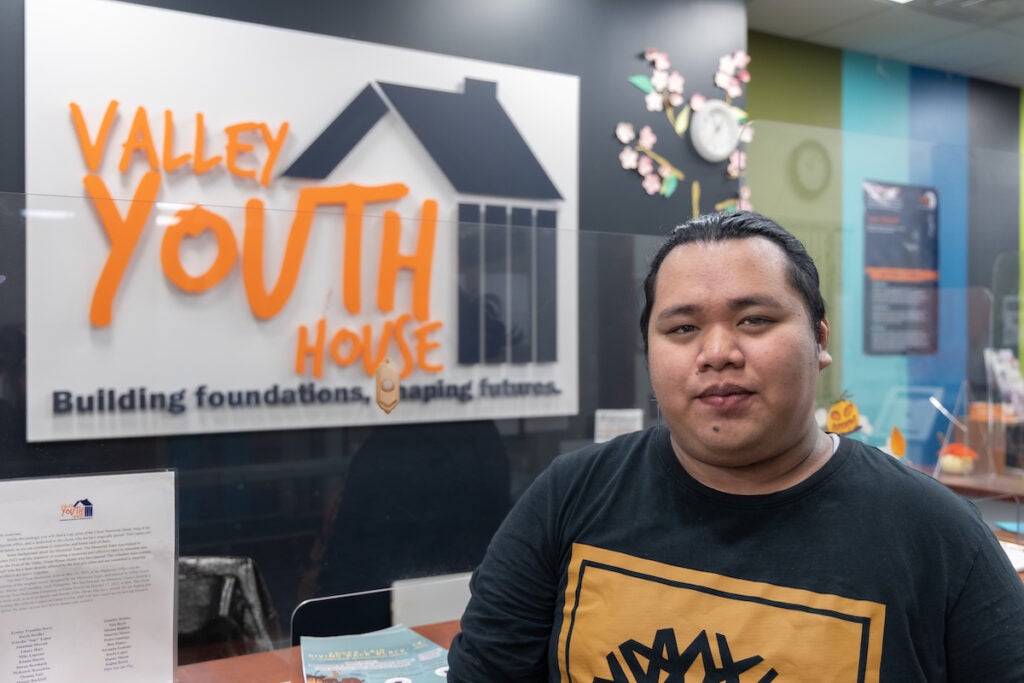
He also credits the support from Valley Youth House for giving him the stepping stones needed not only to get housed, but to also find a career to support his two-year-old son.
A recent report by Annie E. Casey Foundation highlighted alarming statistics for young adults who are parents. Roughly 7,335 young parents under the age of 25 experienced homelessness on a single night in January 2020. Advocates say the lack of shelter perpetuates the cycle of instability for young children in the future.
As a young father, Garcia is determined to become stable.
In the last year or so, he set his dream of becoming a business owner aside.
What matters, he says, is to support others like him — young, alone, and unhoused.
He also has more to live for and be an example for. Garcia, who has not spoken to his family since he left three years ago, looks to Michele Spana, “my second mom.”
And Spana said: “I tell people Paulo is my bonus son.”
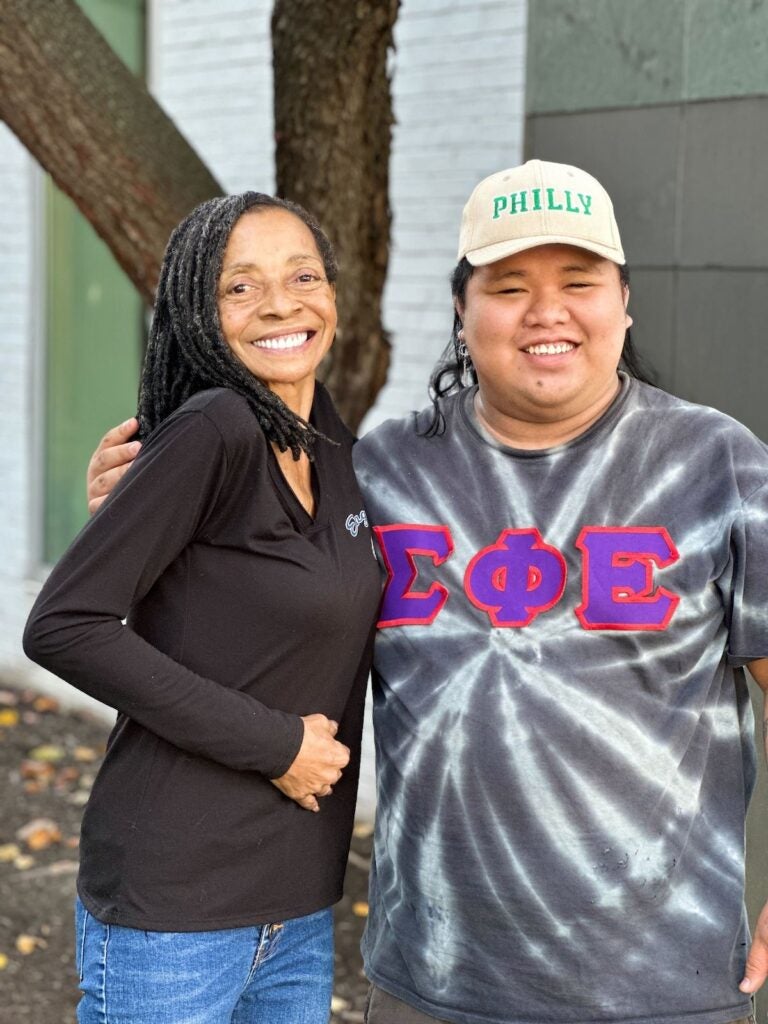
Spana has been in recovery from substance abuse for six years and became a certified peer specialist for the national nonprofit, Resources for Human Development.
She runs La Casa, a community rehabilitation residence for young adults 18-24 years old who have experienced homelessness, and/or have mental health or substance abuse needs. Garcia was one of the 10 new residents.
When he first arrived two years ago, she recalled a quiet, cautious young man. But they hit it off.
“I saw potential in him and he knew that I like coffee,” she said, laughing. “So, we kind of bonded over coffee, initially.”
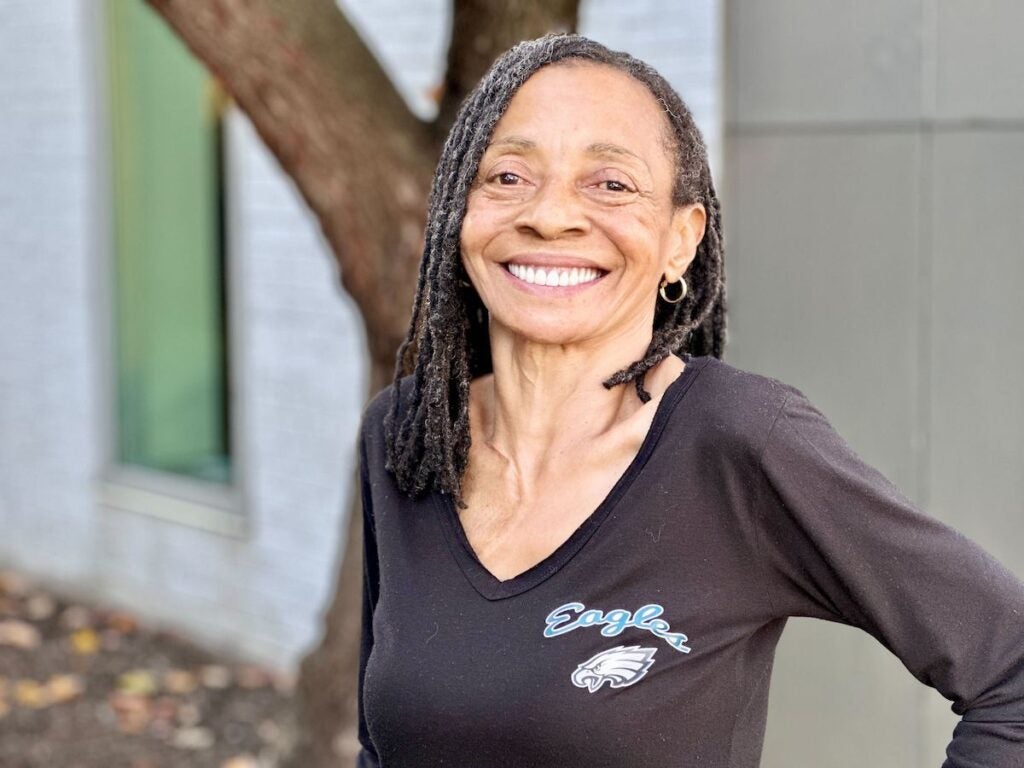
Over two years, he learned the ins and outs of what becoming a certified peer specialist meant. He shadowed Spana to see how she ran her group. He listened to her advice and signed up for classes. She always had an extra Keurig cup for him on exam days.
She remembered the day he finished the program.
“He aced it,” she recalled. “When Paulo graduated, that was my proud mama bear moment.”
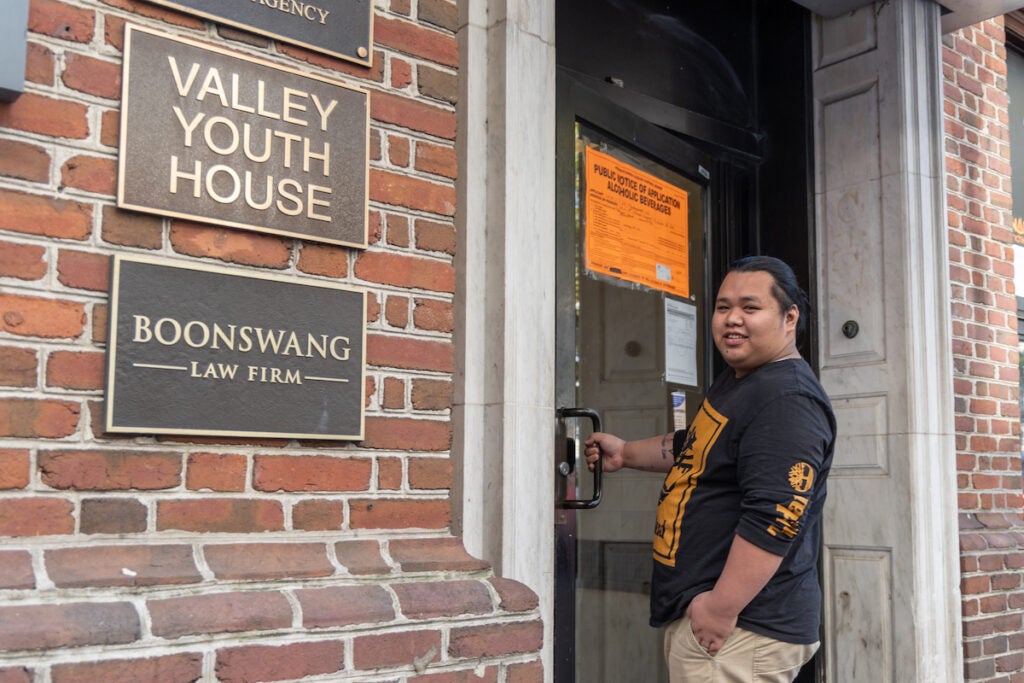
Now a parent himself, Garcia understands his new responsibility. His son saved his life, he said. It gave him a new perspective.
Newly housed as of September, Garcia said it took time for his new life to sink in. Looking around his kitchen, he sees the possibility to whip up his favorite dishes from the Philippines.
“A couple years ago I was on the street, sleeping, and now I go to my own kitchen. I can cook whatever I want in my kitchen,” he said. “[I can] sleep anytime I want or wake up, yeah, definitely feel family now.”
Pointing to his tattoo that says “Faith. Hope. Love.,” Garcia tells others in his position not to lose hope.
And he wants his own parents to know he’s OK.
Today he is focused on giving his child the freedom and support to do what he wants as he grows up.
“I want to stay home, be on the phone, and see my kid,” he said. “Read him a book, talk to him on the phone to fall asleep.”

Get daily updates from WHYY News!
WHYY is your source for fact-based, in-depth journalism and information. As a nonprofit organization, we rely on financial support from readers like you. Please give today.


